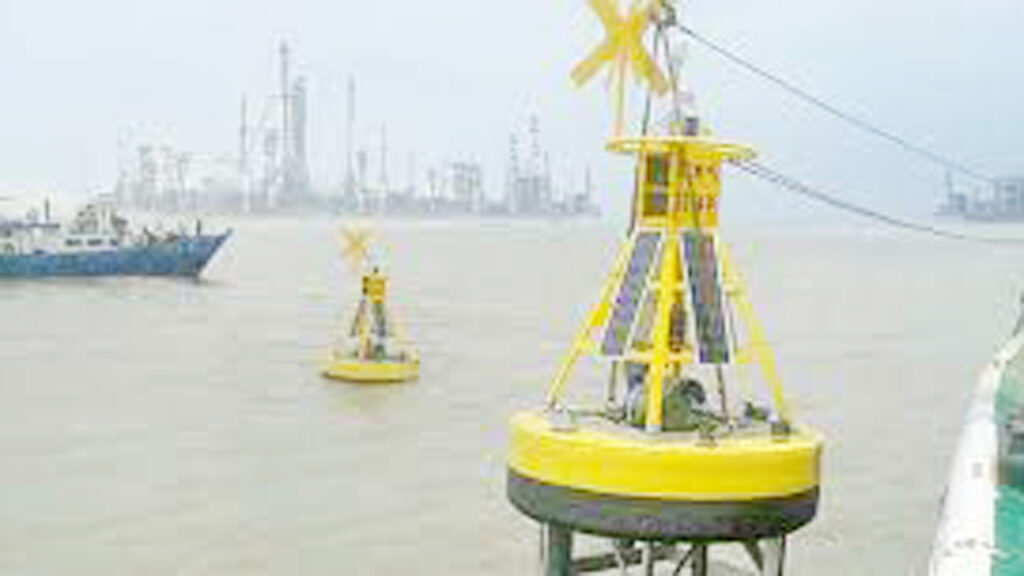How to monitor water quality – Essential tips and tools
Ever wondered if the water you drink, bathe in, or use for work is safe? Water quality monitoring is key to keeping water sources healthy. In this guide, I’ll share how to monitor water quality for homes, the environment, and businesses.
Monitoring water quality is vital for public health, the environment, and following rules. By learning to test water, you can spot and fix problems early. Are you ready to learn how to monitor water quality like a pro?

Image by s-can
Key Takeaways
- Discover the fundamental techniques for effective water quality monitoring
- Understand the importance of water quality testing for environmental, health, and regulatory reasons
- Learn about the essential equipment and tools needed for comprehensive water quality analysis
- Explore the step-by-step process for collecting samples, testing, and interpreting results
- Gain insights into the key water quality parameters and how to measure them
- Discover the latest digital monitoring systems and technologies for water quality management
- Develop strategies for addressing common water quality issues and maintaining optimal water conditions
Importance of Water Quality Monitoring
Keeping our water clean is key for our environment and communities. Water pollution detection and monitoring are vital. They help protect our water supplies. By knowing how important monitoring is, we can act to keep our water safe for the future.
Environmental Impact of Poor Water Quality
Poor water quality has big effects. It can harm aquatic life and upset the balance of nature. Contaminants like heavy metals and pesticides can destroy our waterways and harm the creatures that live there.
Health Risks Associated with Contaminated Water
Drinking or touching contaminated water can be dangerous. It can spread diseases like cholera and typhoid. Exposure to toxic chemicals can cause serious health problems, including brain damage and cancer.
Regulatory Requirements for Water Quality
In the U.S., the EPA sets strict rules for water quality. Laws like the Clean Water Act and Safe Drinking Water Act require regular checks. Following these rules is crucial for keeping our water and air safe.
Knowing how important monitoring is, we can work to protect our water. Regular checks and good water treatment are key. They help keep our water clean and reduce health and environmental risks.
Don’t miss out on related tips: Read this next: can a PVC pipe be used for potable water?
Essential Equipment for Water Quality Testing
Keeping our water clean is very important. It needs special tools to do it right. As someone who loves the environment, I’ve learned about the key gear for water contamination analysis and aquatic ecosystem assessment. Here are the main tools that help a lot in this work.
The pH meter is a must-have for testing water. It checks if the water is too acidic or too alkaline. This tells us a lot about the water’s health. We also use dissolved oxygen sensors to see how well the water can breathe.
- Portable pH meters for on-site measurements
- Dissolved oxygen probes to assess water oxygenation levels
Spectrophotometers are also very important. They can find and measure many things in the water, like nutrients and harmful substances. Their ability to do many things makes them very useful.
We also need the right tools to take water samples. Special bottles, tubes, and filters help us get water samples that truly show what’s in the water. These tools help us get the information we need to protect the aquatic ecosystem.
- Spectrophotometers for detailed chemical analysis
- Sampling devices like bottles, tubes, and filters
With these tools, we can really understand the water and keep it safe. We can make smart choices and take steps to keep our water clean. This way, we can protect our water for the future.
How to Monitor Water Quality: Step-by-Step Process
Keeping water clean and safe is key for our health and the planet. As a water quality expert, I’ll show you how to monitor water quality. We’ll use the latest water quality monitoring techniques and water testing methods.
Sample Collection Methods
Getting accurate water quality starts with good sample collection. Here’s how to do it right:
- Choose the right spots to take samples based on the water source and where it might get contaminated.
- Use clean containers and follow strict steps to collect samples, keeping them safe.
- Mark samples with important details like when and where they were taken.
- Send samples to the lab safely, using the right storage and care.
Testing Procedures and Protocols
After collecting samples, it’s time to test them. We follow set rules to get precise results:
- Use approved methods and tools for each water quality test.
- Make sure all tools are calibrated and follow quality control steps.
- Follow guidelines for how long to keep samples and how to prepare them.
- Do tests twice and check results to make sure they’re right.
Documentation and Record Keeping
Keeping detailed records is crucial for good water quality monitoring. Here’s how to do it:
| Documentation Requirement | Importance |
|---|---|
| Detailed sampling logs | Helps track where samples come from and spot issues early |
| Analytical test results | Shows water quality trends and if it meets standards |
| Corrective actions and follow-up reports | Shows we’re managing water well and solving problems |
By following these steps, you can get reliable water quality data. This helps protect our environment and keeps us healthy.
Key Water Quality Parameters to Measure
As a professional copywriting journalist, I know how vital it is to check water quality. This ensures our drinking water is safe and clean. There are key parameters we must measure and track for this.
The pH level of water is crucial. The pH scale is from 0 to 14, with 7 being neutral. Drinking water should have a pH between 6.5 and 8.5. This range shows the water is safe and potable. Any deviation from this range could mean the water has acidic or alkaline substances that are harmful.
- Dissolved oxygen levels are also essential, as they reflect the overall health and balance of the water ecosystem. Low dissolved oxygen can signify the presence of organic pollutants or sewage contamination.
- Turbidity, or the cloudiness of the water, is a measure of the suspended particles and sediment. High turbidity can make water unsafe for consumption and indicate the need for further filtration or treatment.
- Conductivity, or the ability of water to conduct electricity, provides insights into the concentration of dissolved ions and minerals. Elevated conductivity may suggest the presence of pollutants or salts.
- Nutrient levels, such as nitrates and phosphates, are also crucial parameters to monitor. Excessive nutrients can lead to algal blooms and eutrophication, which can severely impact aquatic life and water quality.
By regularly testing and analyzing these key water quality parameters, we can detect potential contamination. This ensures we meet regulatory standards. It also helps us take the right steps to keep our drinking water safe and pure.
| Parameter | Significance | Ideal Range |
|---|---|---|
| pH | Acidity/Alkalinity | 6.5 – 8.5 |
| Dissolved Oxygen | Aquatic Ecosystem Health | > 4 mg/L |
| Turbidity | Suspended Particles | |
| Conductivity | Dissolved Ions/Minerals | 50 – 1500 ?S/cm |
| Nutrients (Nitrates, Phosphates) | Algal Growth and Eutrophication |
Physical Testing Methods for Water Quality
Checking the physical properties of water is key to knowing its quality. We measure temperature, turbidity, and color to understand the water’s state. These tests give us important insights into the water’s condition.
Temperature Measurement Techniques
Getting the water temperature right is crucial. It affects chemical and biological processes in the water. We use thermometers, digital sensors, and infrared tech to measure it. It’s important to record the temperature when we take the water sample.
Turbidity Testing Procedures
Turbidity shows how cloudy or full of particles the water is. We use turbidimeters to measure it. This helps us find out if the water needs treatment.
Color and Odor Assessment
The color and smell of water tell us a lot. If it’s off-color or smells bad, it might have pollutants. We check the water’s color and smell to see its condition.
By looking at temperature, turbidity, color, and smell, we get a full picture of the water. These tests are vital for keeping our water clean and safe.
Chemical Analysis Techniques
I’m a pro in environmental water monitoring, and I know how crucial it is to get water contamination analysis right. Chemical analysis is key for me. It helps me find and measure specific pollutants in water. Let’s dive into the common chemical analysis methods used.
Titration
Titration is a top choice for analyzing water. It involves adding a reagent slowly until a certain point is hit. This method works well for finding acids, bases, and certain ions. By tracking the reagent’s volume, I can figure out the chemical’s amount.
Colorimetry
Colorimetry is another great technique. It uses color changes in water to spot contaminants. A reagent is added, creating a colored compound. The color’s intensity shows the contaminant’s level.
Ion-Selective Electrodes
Ion-selective electrodes are special sensors. They measure ions like chloride, nitrate, or fluoride in water. These sensors send a signal based on ion levels, helping me accurately measure contaminants.
Using these methods, I can keep an eye on water quality and find contamination issues. This info is key for keeping our water safe and sustainable.
| Chemical Analysis Technique | Principle | Typical Applications |
|---|---|---|
| Titration | Gradual addition of a reagent to a water sample until a specific endpoint is reached | Determining concentrations of acids, bases, and ions |
| Colorimetry | Measuring color changes in water samples to detect the presence and concentration of contaminants | Identifying organic compounds, metals, and other pollutants |
| Ion-Selective Electrodes | Specialized sensors that measure the concentration of specific ions in water samples | Monitoring levels of chloride, nitrate, fluoride, and other ionic contaminants |
By using these techniques in my environmental water monitoring, I get a full picture of water quality. This is vital for keeping our ecosystems healthy and our drinking water safe.
Biological Water Quality Indicators
Looking at water quality isn’t just about physical and chemical tests. We also need to check the biological parts of a water system. These biological signs are key for a full aquatic ecosystem assessment.
Microorganism Analysis
Microorganisms like bacteria and viruses tell us a lot about water quality. Testing for Escherichia coli or Enterococcus shows if harmful microbes are present. This helps us spot water pollution detection problems early.
Aquatic Life Assessment
The health of fish, invertebrates, and plants shows how well the water is doing. By checking the diversity and numbers of these species, we see if the water can support life. Changes in these groups can mean there are problems that need fixing.
Algae Growth Monitoring
Watching how algae grow tells us about nutrient levels in the water. Too much algae can mean too many nutrients. Changes in algae types can show changes in water chemistry or other factors. Keeping an eye on algae growth is vital for aquatic ecosystem assessment and water pollution detection.
By using these biological indicators, we get a better picture of water systems. This helps us find and fix problems before they get worse. It lets us make smart choices and keep our water environments healthy and lively.
Digital Monitoring Systems and Technology
Modern digital technologies have changed how we check water quality. They help with water treatment plant monitoring and environmental water monitoring. These tools have made checking water quality easier and more accurate.
Remote sensing technology is a big help. It uses satellites and planes to watch over water from afar. This lets us see changes in water, like dirt or algae, without being there. It makes checking water better and wider.
Real-time data loggers are also key. They are small devices that send out important water info like temperature and oxygen levels. They help us find problems fast and fix them quickly.
Automated systems are changing water treatment plant monitoring too. They use many sensors and computers to watch water all the time. This makes sure water is safe and treated well, all the time.
With these new technologies, checking water quality is getting better. We can make smarter choices and protect our water. This helps our communities and the planet.
Interpreting Water Quality Test Results
It’s key to understand water quality test results for safe drinking water and good wastewater management. We compare our findings to set standards to find any contaminants. Then, we take steps to fix them.
Water Quality Standards
Water quality standards depend on how the water is used. This includes drinking, recreation, or industry. The Environmental Protection Agency (EPA) in the U.S. sets these standards. They aim to keep us healthy and the environment safe.
Identifying Common Contaminants
Water tests show many contaminants like germs, heavy metals, and chemicals. Knowing these helps us find and fix the problem. This is vital for safe drinking water and managing wastewater right.
Action Thresholds and Response Plans
After understanding test results, we set action levels and plans. These levels tell us when to take action to fix the water. Having a plan ready helps us act fast to keep everyone safe.
| Parameter | EPA Drinking Water Standard | Typical Action Threshold |
|---|---|---|
| Bacteria (E. coli) | 0 CFU/100 mL | 1 CFU/100 mL |
| Nitrate | 10 mg/L | 8 mg/L |
| Lead | 15 ?g/L | 10 ?g/L |
Knowing water quality standards, identifying contaminants, and setting action levels helps us. We can then take the right steps to keep drinking water safe and manage wastewater well.
Common Water Quality Issues and Solutions
I’ve seen many water quality problems in my career. These issues affect the purity and safety of our water. It’s key to know the challenges and how to solve them.
Water pollution is a big worry. We can find pollutants like heavy metals and bacteria through testing. Using filters and treating wastewater helps keep our water clean and safe.
Wastewater management is also a big problem. If not managed right, it can harm the environment and our health. Building better treatment facilities and teaching people how to dispose of waste properly helps a lot.
FAQ
What are the key water quality parameters to measure?
Important water quality parameters include pH, dissolved oxygen, turbidity, conductivity, and nutrient levels. These help us understand water quality and detect contamination.
What are the common physical testing methods for water quality?
Common physical tests are temperature, turbidity, and color and odor checks. These methods show physical signs of water quality issues.
How do I interpret water quality test results?
To understand test results, know the water quality standards. This helps spot contaminants and check if they’re within safe levels. It’s also key to have plans for any problems found.
What are the typical biological indicators of water quality?
Biological indicators include microbial analysis, aquatic life checks, and algae monitoring. These show the health and balance of the water ecosystem.
What kind of digital monitoring systems are used for water quality assessment?
Digital tools like remote sensing and real-time loggers are used for better water quality monitoring. They offer continuous and detailed assessments of water quality.
How do I ensure proper sample collection for water quality testing?
Accurate testing starts with proper sample collection. Use standard methods, the right containers, and follow preservation steps. Detailed records of the sampling process are also vital.
What are the common water quality issues and how can they be addressed?
Issues include contamination, nutrient excess, and pH imbalances. Solutions include water treatment, preventive actions, and ongoing monitoring and management.




